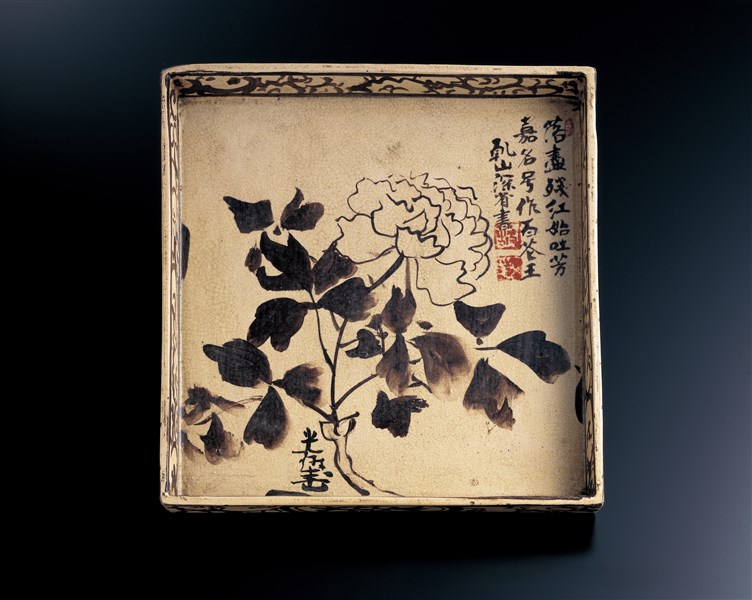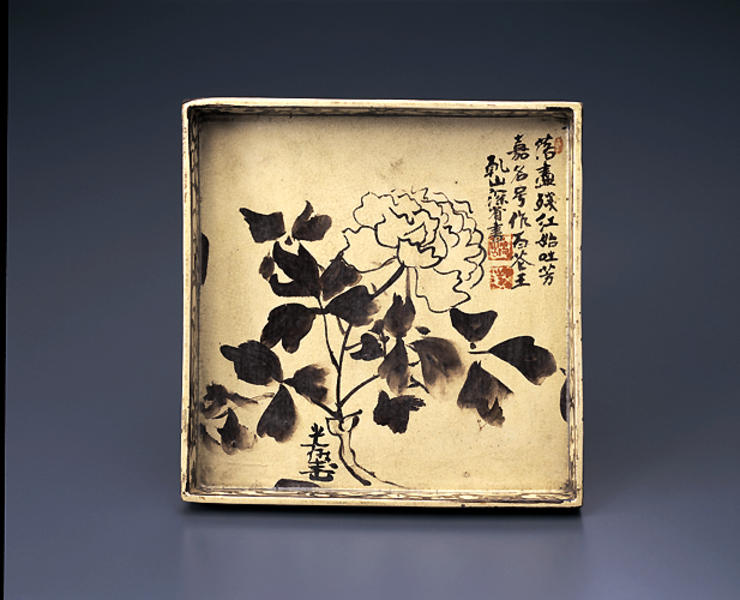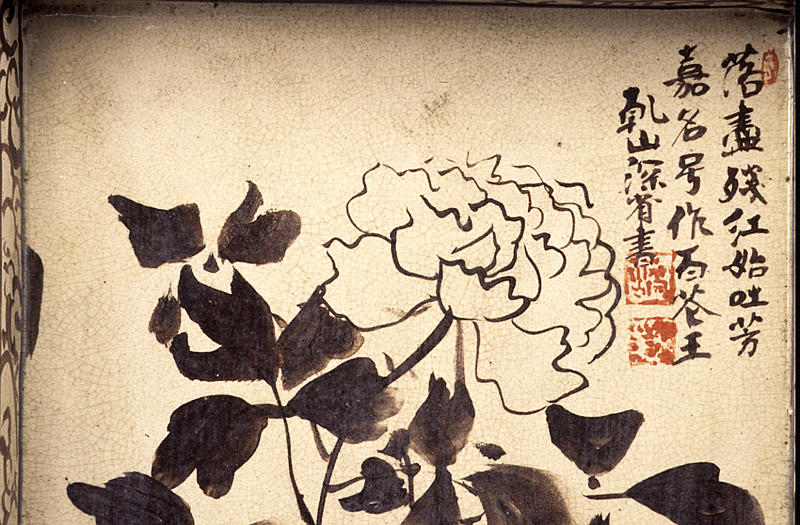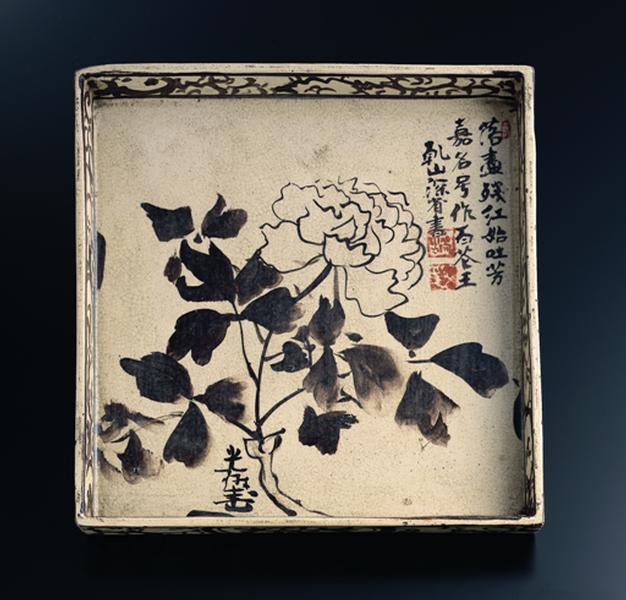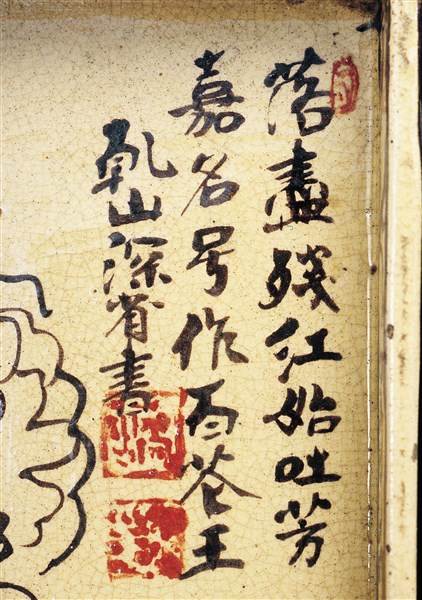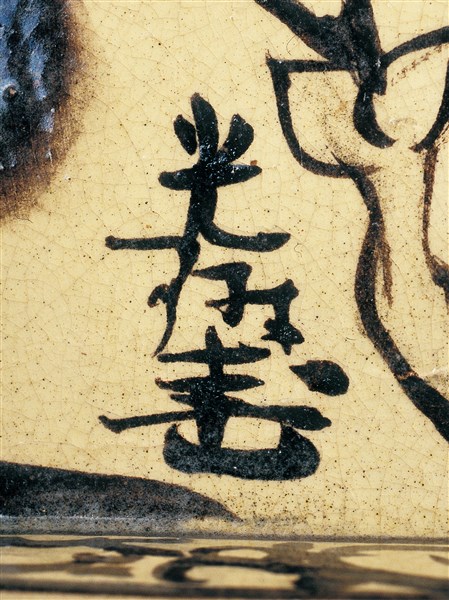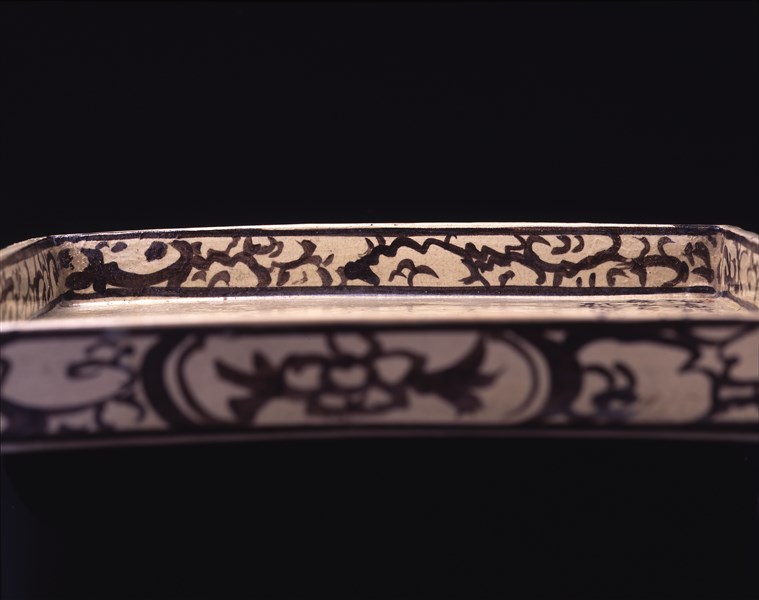Square Plate with Peony Design
- Narutaki, Kyoto
- Edo period
- 18th century
- Kenzan ware, underglaze iron decoration
- H-3 D-22 W-21.9
Catalogue Entry
Edo period, 18th century
Kenzan ware, underglaze and overglaze decoration
Height, 21.9cm; width, 21.9cm; depth, 3.0cm
White slip has been applied to the entire exterior surface of this plate and peony blossoms painted on top of the white slip in underglaze iron. Finally, a transparent glaze was applied overall. The white slip was brushed on, and close inspection reveals traces of the brush strokes. The seal that accompanies the inscription on the painting was printed with red overglaze using a paper stencil. The peony painting is signed "Korin ga," accompanied by the statement "Kenzan shinsei sho," indicating a ceramic work created by Kenzan and decorated by Korin, his older brother.
In the past, the dominant scholarly view held that such joint works by the 2 brothers were created in the early Kenzan ware period, on the basis of the following statement in "Toji Seiho (Sano Densho)" which is said to have been written by Kenzan: "At first, all of the paintings were painted by Korin ... ." However, a comparison with Korin's kao, or written seal, found on other documents, such as letters, indicates that the majority of the plates created jointly by the brothers should be dated to around the end of the Narutaki period, and at present this is the dominant scholarly opinion. YO
Square Dish with Peony Design
Square Dish with Peony Design
A painting by Korin in underglaze iron of the auspicious peony, king of flowers, fills the surface of this dish, a collaborative work created by Kenzan and his elder brother Korin. Made with the square shape of shikishi decorative calligraphy and painting papers and with motifs on their raised rims, works of this type are also called "framed dishes."
Korin has used tarashikomi, a distinctively Rimpa technique, on part of the peony leaves, layering the pigment on surface areas still wet with paler pigment, to create an effect of pooled colors with softly blurred edges. Usually when painting on unglazed ceramics, the brush is somewhat snagged on the surface and cannot proceed as smoothly as when working on paper or silk. The pigment (the underglaze) is absorbed as soon as the brush touches the surface. Kenzan's technique of covering his works entirely in white slip not only circumvented that difficulty, making possible smooth brushwork, but also created a visual effect very similar to a painting on paper or silk. Korin’s paintings on Kenzan’s pottery sometimes were created with such energetic brushwork that they overflowed the picture plane, as in the Korin-Kenzan Patterns for Tea Bowls (Idemitsu Museum, Tokyo). We sense that vigor in this piece, in which the leaves overflow the (ceramic) picture plane.
Kenzan's poetic inscription, on the upper right, seems cramped, and the Korin signature and seal by one of the stems seems to have been placed there because nowhere else was available. This collaborative work is somehow amusing in communicating both the close ties between the brothers and the differences in their personalities.
